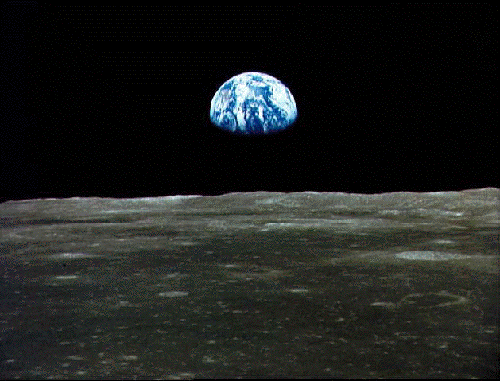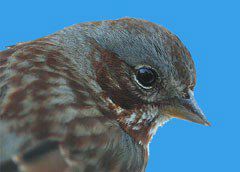|
|
|||
|
|
|||
|
|
THIS WEEK at HILTON POND In memory of the crew of STS107, Space Shuttle Columbia, 1 February 2003 |
|
|
As I was preparing to post the current installment of "This Week at Hilton Pond" on the morning of 1 February 2003, I got word there had been a problem as Space Shuttle Columbia made its final descent after 15 days in orbit. Like millions of people in the U.S. and around the world, I spent the next several hours glued to television, absorbing the day's events and mourning the loss of seven Israeli and American astronauts who died in the pursuit of scientific research. As a naturalist, I investigate the flora and fauna around me on Planet Earth, but I have utmost respect for those who reach for the stars and explore the cosmos. As a tribute to these explorers and as an expression of my sadness over the latest shuttle disaster, I've opted to post the following article I wrote for The York Observer in Rock Hill, South Carolina, in July 1989--the 20th anniversary of the Apollo 11 lunar expedition. It's a little different from our usual nature essay about Hilton Pond Center, but I think you'll see the connection . . . . BILL HILTON JR.......... MEMORIES OF A LUNAR LANDING BARTOW, WV--Today is a special day in the history of the U.S. space program, and people around the country are recollecting where they were 20 years ago when Neil Armstrong made his first small step onto the surface of the Moon in 1969. I, too, have been thinking about that event, but my own memories of Armstrong go back five more years to 1964. That summer I was privileged to be among 100 high school scientists from around the country--two from each state--picked by their governors to attend the National Youth Science Camp at Bartow, West Virginia. The NYSC was begun in 1963 to celebrate West Virginia's centennial, and in the years since plenty of top-notch, big-name scientists have visited the Mountain State to speak to NYSC delegates. None, however, could have had as much an impact on me as did the future astronaut who lectured in my camper year.
Photo © National Youth Science Camp In July 1964 Neil Armstrong enthralled me and my fellow delegates with his presentation about futuristic plans for the Apollo manned mission to the Moon. I distinctly remember him standing before us outside the camp's rustic lecture hall, precise in his delivery and majestic in his professionalism and military bearing.
In the summer of 1969 I was back at the NYSC to direct the natural sciences program. By 16 July, that year's delegates had already returned home, so staff members gathered around the only available television set at a small motel several miles from camp. We cheered and clapped at the successful liftoff (above left) of the giant Saturn rocket that propelled Apollo 11 out of Earth's atmosphere, and after that it was just a matter of waiting for Neil Armstrong and his colleagues to make their three-day trip to the Moon.
Last week I returned to Bartow to celebrate my 25th anniversary as an NYSC delegate and to deliver my own lecture to this year's National Youth Science Camp. With cold chills crawling up and down my spine, I tried to convey to the current crop of campers how exciting it had been to meet Neil Armstrong 25 years earlier and to talk with him about his plans to be the first man on the Moon. I was nearly speechless at using the very same chalkboard my favorite astronaut had used in 1964.  Near the end of my lecture, I wished the science campers success in their upcoming college careers, and then I showed them a photograph of the Earthrise that Armstrong's crew had taken from the Moon. Neil Armstrong and all the other astronauts and cosmonauts have a unique perspective that none of the rest of us can really know. They have seen the "little blue marble" called Earth hanging in the immense black void of space. From a quarter million miles away they have scanned our wispy clouds and our oceans and the continents of terra firma that we walk upon each day. They understand, as can no others, how small a planet we inhabit, how delicate Spaceship Earth really is. I closed my lecture with the wish that every 1989 science camper--and every Earthling, for that matter--could do as Neil Armstrong did and view our tiny planet from afar.
Black-and-white Photo of Neil Armstrong © National Youth Science Camp Lunar Photos © NASA "This Week at Hilton Pond" is written and photographed by Bill Hilton Jr., executive director of Hilton Pond Center for Piedmont Natural History. You may wish to consult our Index of all nature topics covered since February 2000. You can also use the on-line Search Engine at the bottom of this page. For a free, non-fattening, on-line subscription to "This Week at Hilton Pond," just send us an E-mail with Subscribe in the subject line. Please be sure to configure your spam filter to accept E-mails from hiltonpond.org. |
|
Make direct donations on-line through
Network for Good: |
|
|
LIKE TO SHOP ON-LINE?
Donate a portion of your purchase price from 500 top on-line stores via iGive: |
|
|
Use your PayPal account to make direct donations:
|
|
|
SPECIES BANDED THIS WEEK * = New species for 2003
NOTABLE RECAPTURES **This bird is believed to be the oldest individual of any species banded at Hilton Pond Center. Since Song Sparrows are not known to breed on-site, this bird is an apparent migrant that keeps finding its way back. |

FOX SPARROW WEEKLY BANDING TOTAL YEARLY BANDING TOTAL BANDING GRAND TOTAL
SIGHTINGS OF INTEREST --Up to 9.5" of unusually light and powdery snow fell at Hilton Pond Center between about 2 and 10 a.m. on 23 Jan. In addition to dozens of White-throated Sparrows, Northern Cardinals, Eastern Towhees, Blue Jays, American Goldfinches, Brown Thrashers, Carolina Wrens, Chipping Sparrows, and Dark-eyed Juncos that were drawn by the weather to the Center's feeders, a locally rare Rusty Blackbird perched briefly in a tree and then disappeared.
VAGRANT HUMMINGBIRDS None banded this week |
Back to Preceding Week; on to Next Week
|
Up to Top of Page Back to This Week at Hilton Pond Center Current Weather Conditions at Hilton Pond Center |
 post questions for The Piedmont Naturalist |
Join the |
Search Engine for |
|
|